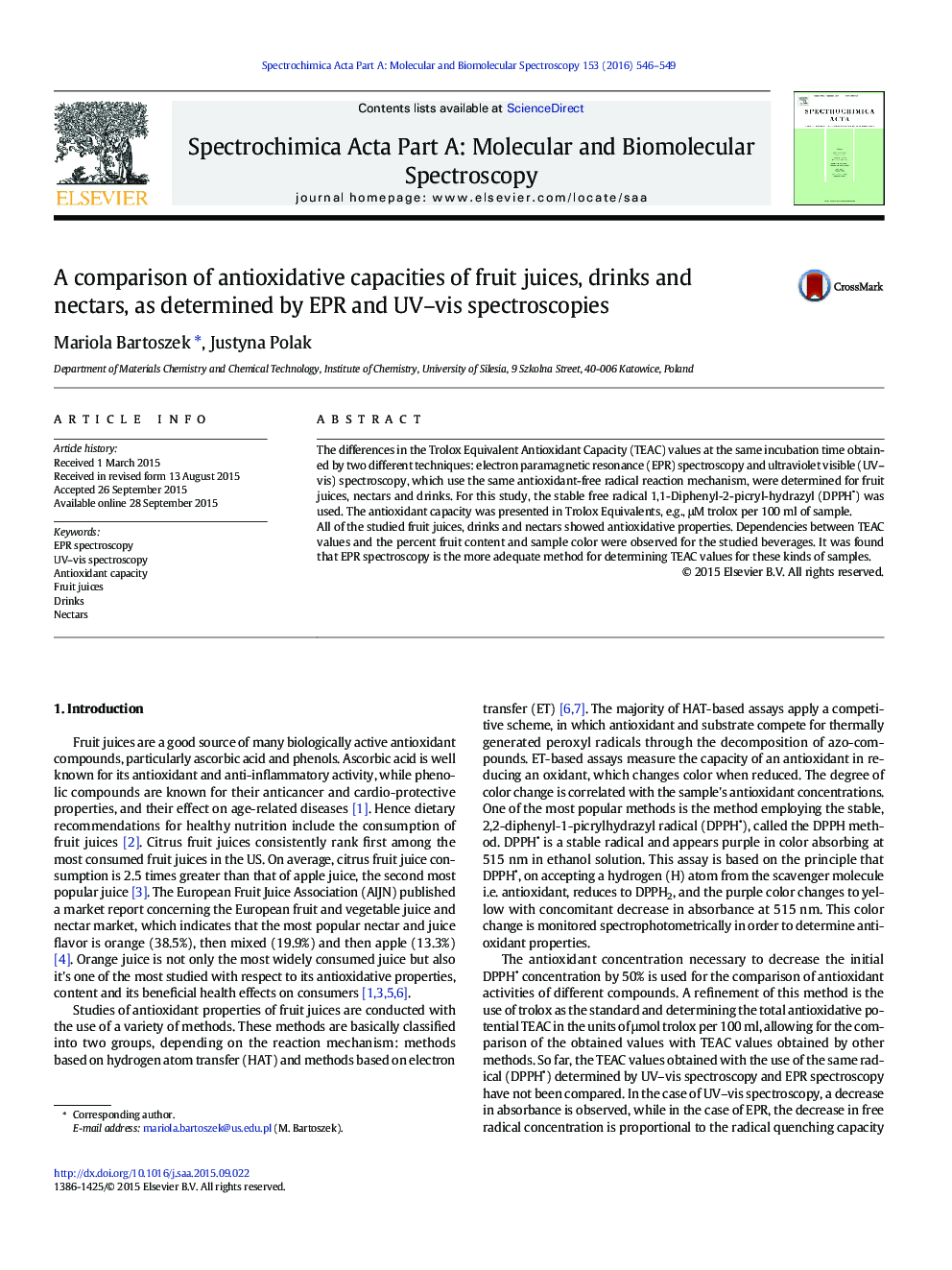| Article ID | Journal | Published Year | Pages | File Type |
|---|---|---|---|---|
| 1228762 | Spectrochimica Acta Part A: Molecular and Biomolecular Spectroscopy | 2016 | 4 Pages |
•The antioxidant properties of fruit juices, drinks and nectars were investigated.•Antioxidant capacity obtained by EPR and UV–vis spectroscopies was compared.•The advantages and disadvantages of EPR and UV–vis methods were given.•Correlation between TEAC values and the percent fruit content was determined.
The differences in the Trolox Equivalent Antioxidant Capacity (TEAC) values at the same incubation time obtained by two different techniques: electron paramagnetic resonance (EPR) spectroscopy and ultraviolet visible (UV–vis) spectroscopy, which use the same antioxidant-free radical reaction mechanism, were determined for fruit juices, nectars and drinks. For this study, the stable free radical 1,1-Diphenyl-2-picryl-hydrazyl (DPPH•) was used. The antioxidant capacity was presented in Trolox Equivalents, e.g., μM trolox per 100 ml of sample.All of the studied fruit juices, drinks and nectars showed antioxidative properties. Dependencies between TEAC values and the percent fruit content and sample color were observed for the studied beverages. It was found that EPR spectroscopy is the more adequate method for determining TEAC values for these kinds of samples.
Graphical abstractFigure optionsDownload full-size imageDownload as PowerPoint slide
